We can use the Currencies data type in Excel to insert live exchange rate data in Excel.
The Currencies data type allows you to get up-to-date information on a specific currency pair.
Linked data types allow your sheets to connect to reputable sources of data. Your sheet’s data about stocks, currencies, and geography can be connected to a rich external database that contains up-to-date information.
Let’s take a look at a common use case for using the Currency data type in Excel.
Suppose you have a spreadsheet that tracks payments. Since you accept clients from multiple countries, you would need to have up-to-date exchange rates for various currencies to your local currency.
Instead of manually searching for the latest exchange rates online, we can use a powerful Excel feature that is available to all Microsoft 365 accounts.
Excel can connect your spreadsheet to real-time exchange rates by setting up a cell with a Currencies data type. This feature is powered by Refinitiv, a global provider of financial market data.
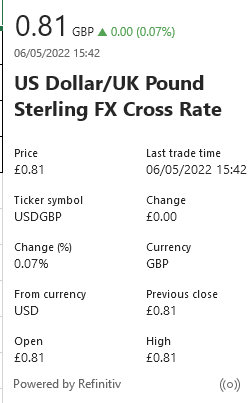
When cells are converted to a linked data type, users can access a data card with various data about the given currency pair. This card includes the price or the exchange rate.
To start using these external data in your spreadsheet, you can use the Insert Data option to extract data to your sheet. Excel will automatically handle number formatting and will automatically update these cells when new data is available.
Now that you know how linked data can help pull live exchange rates, let’s look at a sample sheet that uses live exchange rates.
A Real Example of Live Exchange Rate in Excel
Let’s take a look at a real example of a spreadsheet that pulls up-to-date currency data using linked data types.
In the table below, we’ve listed down a few currency pairs in Column A. For example, the string ‘USD/GBP’ refers to the currency pair of the United States Dollar and the British pound sterling. Notice that a bank or financial symbol appears on the left-hand side of the cell. This indicates that the cell has been converted into a linked data type.
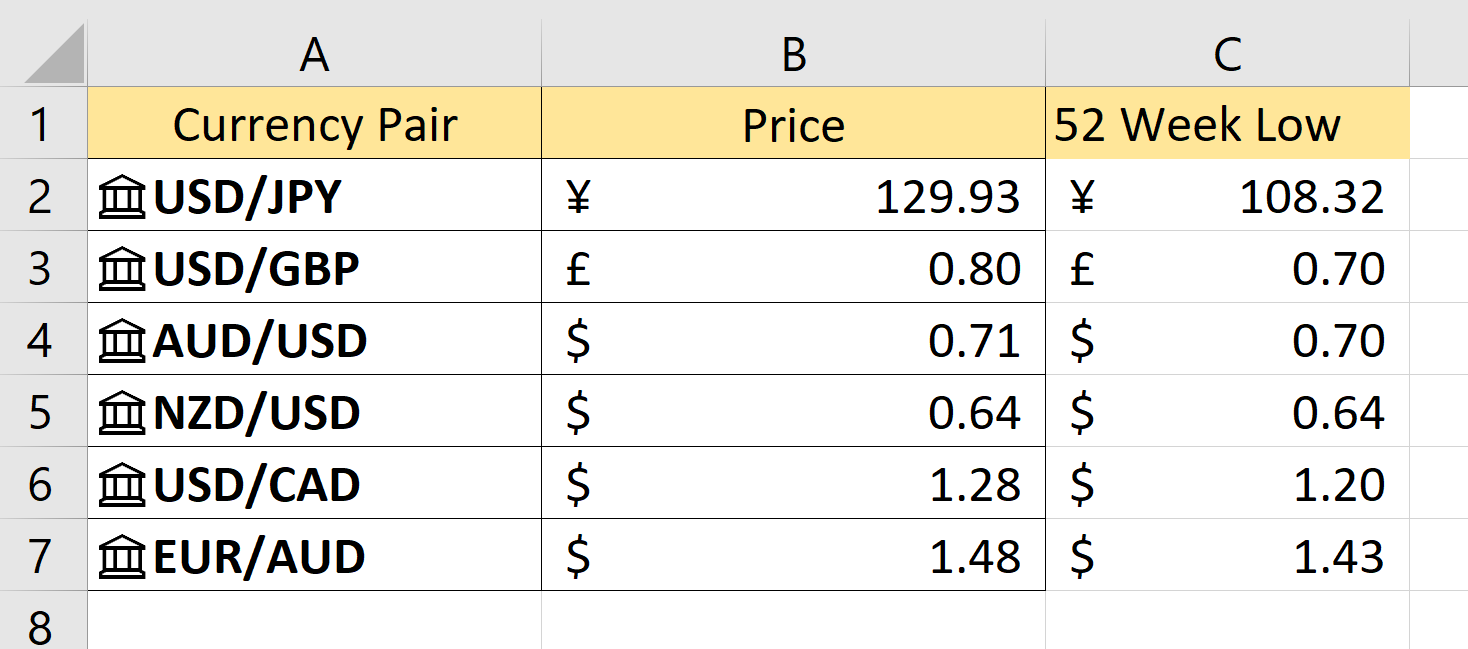
Linked data types give you the option to return various fields. In this example, we’ve returned two specific data fields: ‘Price’ and ‘52 Week Low’.
To extract more information from the Currencies data type, users can click on the Insert Data button or press Ctrl+Shift+F5.
You can make your own copy of the spreadsheet above using the link attached below.
If you’re excited to test out currency data types in Excel, continue to our next section to read a step-by-step guide!
How to Insert Live Exchange Rate in Excel
This section will guide you through each step needed to start using the Currencies data type. You’ll learn how we can use linked data to get and compare exchange rates in your spreadsheet easily.
Follow these steps to start getting live exchange rates in Excel:
- First, write down the currency pairs you would like to convert into a linked data type. The currency pair should follow the format ‘From Currency / To Currency’ or ‘From Currency:To Currency’
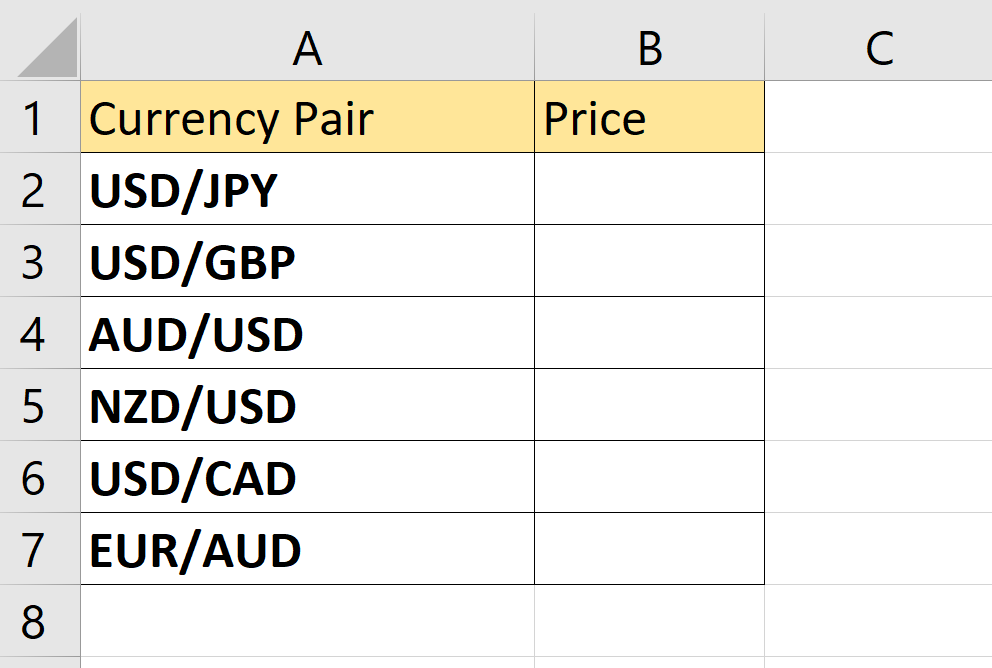
- Next, highlight all the cells that contain your currency pairs.
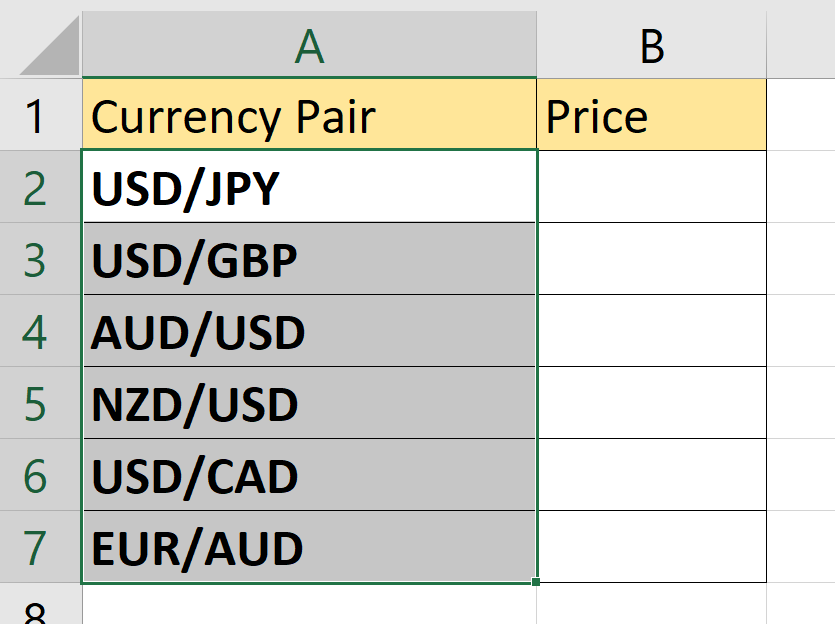
- In the Data tab, look for the Currencies data type and click on the icon.

- Your selected cells should now have an icon related to the data type. In this example, a bank icon indicates that the cell is linked to external financial data.

- Users can click on the icon of each cell to see the data card.

- To fill the price column, click on the Insert Data button and select the Price option from the dropdown menu.
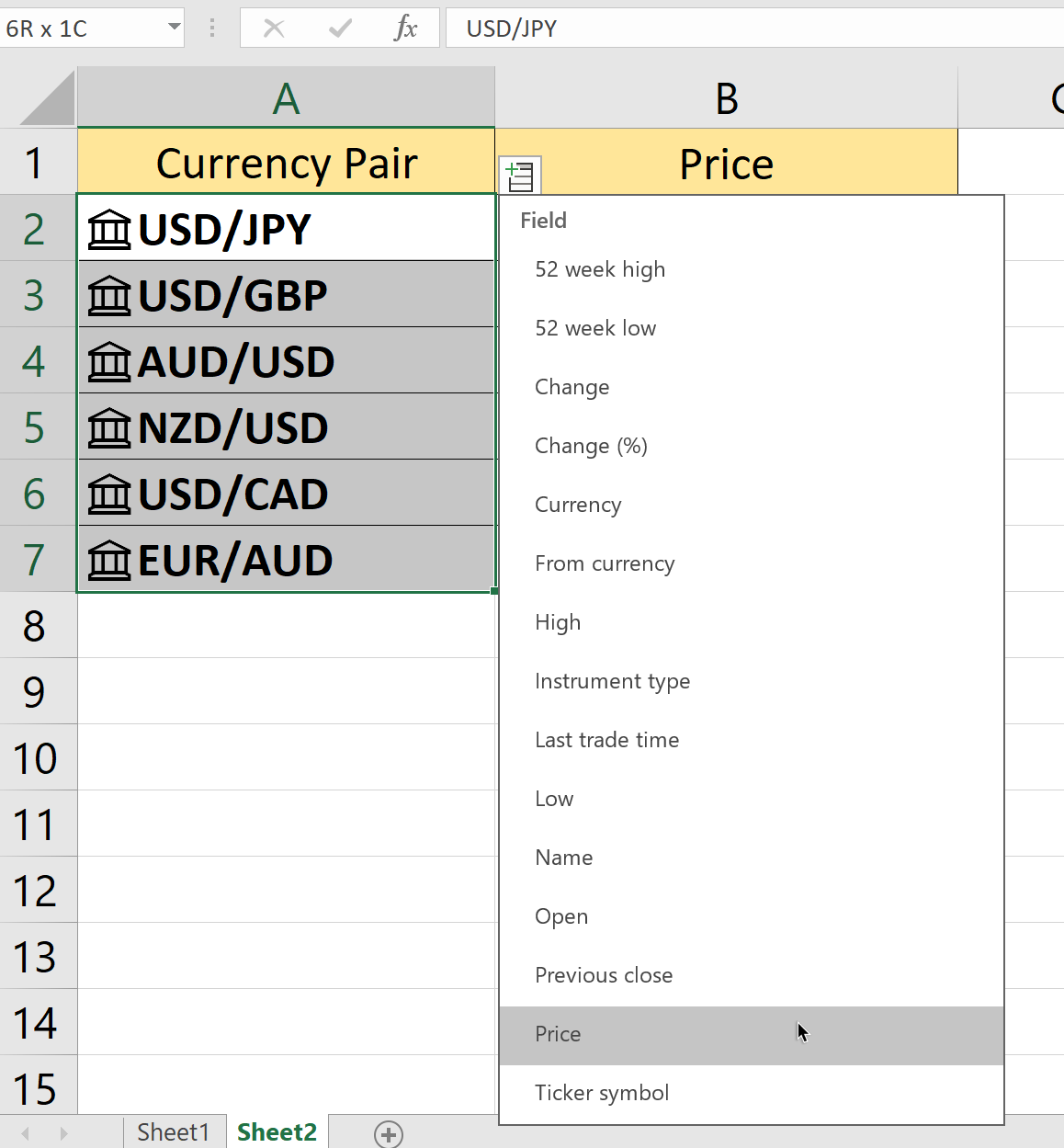
- The exchange rate for each currency pair should now appear in the adjacent column.

- Users can keep adding additional currency data. In the example below, we’ve added the ‘52 Week Low’ data field in Column C.

Frequently Asked Questions (FAQ)
- How often is currency data updated?
Users can expect up to a 30-minute delay with currency data. 52-week high and low values are calculated from the closing price. Users can ensure their data is up to date by clicking on Refresh All in the Data tab to get an updated quote. - Why does my cell display a question mark symbol?
If you see a question mark symbol in the cell, Excel may have difficulty matching the text value with data. If you want to ensure that you choose the right currency pair, you can search for the pair using the Data Selector tool.

This guide has everything you need to pull live exchange rate data in Excel. You should now know how to use linked data types to get up-to-date financial data for your worksheets.
Using the Currencies data type is just one way you can improve your financial trackers with accurate data. With so many other Excel functions out there, you can surely find one that suits your use case.
Are you interested in learning more about what Excel can do? Make sure to subscribe to our newsletter to be the first to know about the latest guides and tutorials from us.







